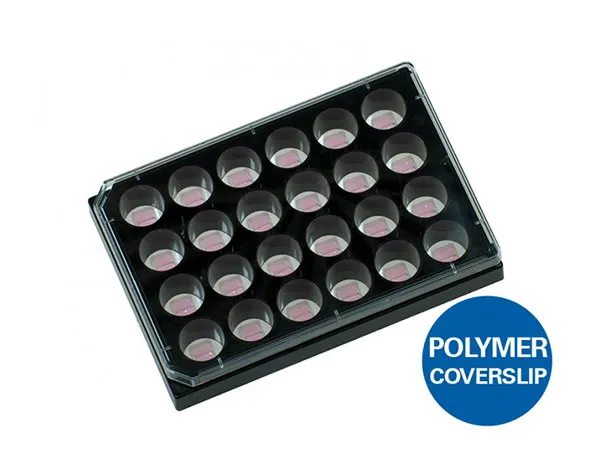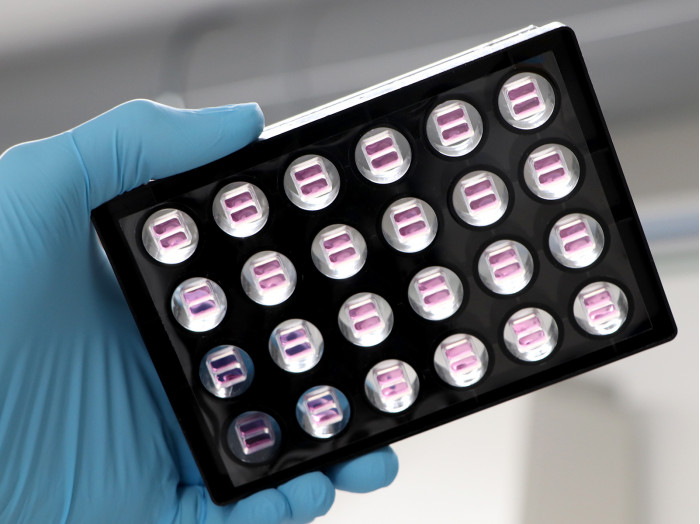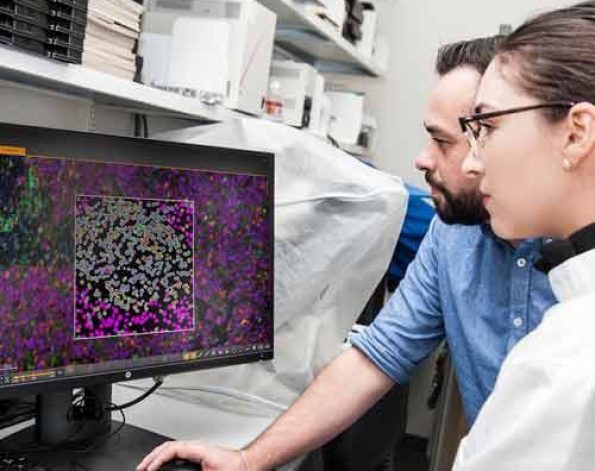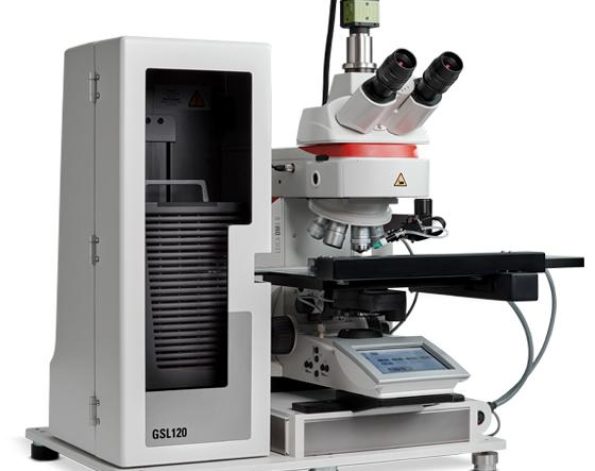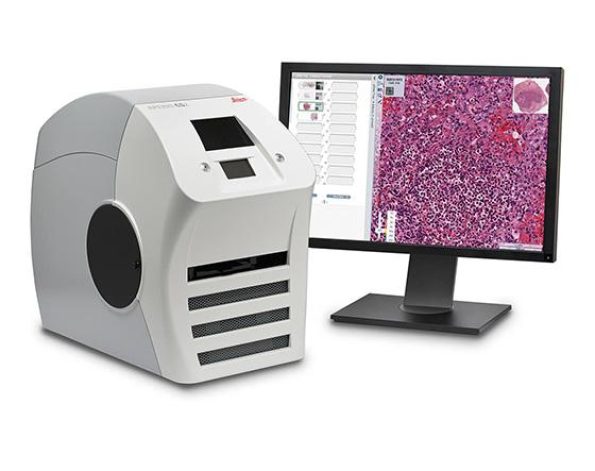ไมโครเวลเพลทแบบ 24 หลุม พร้อมช่องซิลิโคน 2 ช่อง – สามารถกำหนดช่องว่างระหว่างเซลล์ได้ สำหรับการทดลองแบบ wound healing, การทำ cell migration, การทำ 2D invasion หรือการเลี้ยงเซลล์
- เหมาะสำหรับการทดลองแบบ wound healing
- สามารถทำการทดลองซ้ำได้เนื่องจากช่องว่างของส่วนที่เป็นซิลิโคนมีขนาด 500 µm เท่ากันทุกชิ้น โดยซิลิโคนติดแน่นกับก้นภาชนะมั่นใจได้ว่าไม่มีการรั่วซึมของอาหารเลี้ยงเซลล์
- สำหรับการ Screening
- สามารถทำการทดลองพร้อมกันได้จำนวนมาก
- ภาชนะคือไมโครเวลเพลทแบบ 24 หลุม ซึ่งเหมาะสำหรับงานด้านฟลูออเรสเซนต์ หรือการถ่ายภาพความละเอียดสูง
A 2 well silicone insert with a defined cell-free gap, suitable for wound healing, migration assays, 2D invasion assays, and co-cultivation of cells
- Complete solution for wound healing experiments, requiring only a few steps from sample preparation to image analysis
- Reproducible experiments owing to: a defined 500 µm cell free gap, no leakage during cultivation, and no material being left behind after the insert’s removal
- For screening applications
- High parallelization
- Based on µ-Plate 24 Well Black ID 14 mm – i.e., suitable for fluorescence and high resolution microscopy
- Surface Modification: ibiTreat: #1.5 polymer coverslip, tissue culture treated, sterilized
Pcs./Box: 3 (individually packed)
Applications
Specifications
| Number of wells | 2 |
| Outer dimensions | 8.4 x 8.4 x 5 mm (w x l x h) |
| Volume per well | 70 µl |
| Growth area per well | 0.22 cm² |
| Coating area per well | 0.82 cm² |
| Width of cell free gap | 500 µm +/- 100 µm |
| Material | Biocompatible silicone |
| Bottom | No bottom – sticky underside |
Technical Features
- Culture-Insert 2 Well, pre-inserted into the µ-Plate 24 Well Black ID 14 mm
- Biocompatible silicone material with adhesive underside
- Ready-to-use: the Culture-Insert is already placed in the µ-Plate 24 Well Black ID 14 mm
- Clean surface after insert removal without remaining material
- Full specifications and technical details of the µ-Plate 24 Well Black ID 14 mm here
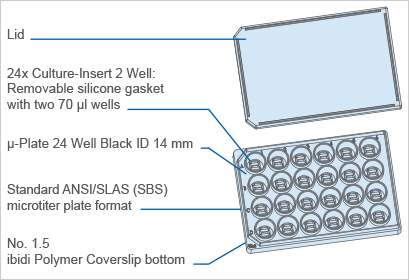
Principle for Wound Healing and Migration Assays

Various Applications
Wound Healing / Migration
Wound healing and migration assays are done by seeding cells into the Culture-Insert 2 Well. After cell attachment, a cell-free gap is created in which the cell migration can be visualized.

Co-Cultivation / Invasion
The Culture-Insert 2 Well can also be used for seeding two different cell types. After the removal of the insert, the cell fronts can be analyzed for their invasional behavior.
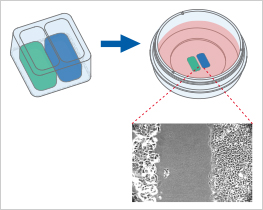
Culture-Inserts vs. Scratch Assay
At first glance, the methods of scratching and placing a Culture-Insert seem to be two very similar approaches to create a cell-free gap. However, at a closer look, these two methods differ in important aspects that could influence the outcome of the assay:
| ibidi Culture-Inserts | Scratch assay | |
| Gap creation | Cell seeding into designated areas | Scratching the cell surface with a needle or pipet tip |
| Gap size | Defined | Varying (i.e., not reproducible) |
| Gap surface residues | No | Extracellular matrix residues possible |
| Vessel surface damage | No | Yes, due to mechanical scratching on the surface |
| Cell damage | No | Yes, due to scratching the cells |
| Segregation & signaling of necrotic/apoptotic cells | Low | High |
| Internal reference * | Yes | No |
The ibidi Culture-Inserts provide improved reproducibility when compared with a scratch assay

Time-dependent changes of the open area due to cell migration. A comparison between gap creation by using the ibidi Culture-Insert 2 Well (left) and by scratching with a pipet tip. Data provided by M. Börries, University Freiburg, Germany.
